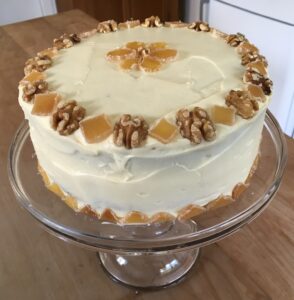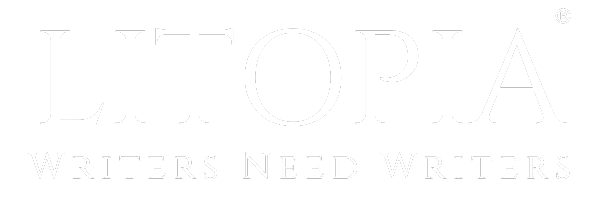- Feb 3, 2024
- LitBits
- 0
New blog post by Robinne Weiss – discussions in this thread, please
---
As a writer, I tend to focus on plot. I love a good action scene, and I also enjoy writing dialogue (probably stems from loving to talk, myself. LOL!). Over the years, I’ve developed a method for outlining my novels that’s sort of a mash-up of different methods I’ve read about.

I start with a good old-fashioned plot mountain diagram—the kind I introduce to my primary school students. On the plot mountain, I pinpoint major plot targets. Where does the story start? Where does it end? What is the climax point? What are the key events that lead to the climax? What are the key points in the main character’s arc?
If there’s a lot going on in the plot, or a complex set of character arcs in the story, I’ll then map the key plot targets onto a story flow chart drawn onto a large sheet of newsprint. On the flow chart, I’ll add more details about how the action will progress, what characters will think and do when faced with the challenges I present them, and how various plot threads will intertwine and interact.
From the flow chart, I’ll break the story into chapters. For each chapter, I’ll write a one-paragraph summary of what needs to happen in the chapter. What plot points need to be reached? What character development needs to occur? What information do I need to withhold so it can be introduced later? The chapter summary is focused on plot and character. I don’t really consider where or how the action will take place, only what must happen in that chapter.
From the chapter outline, I write my first draft. The outline keeps me on track and ensures I don’t forget things or muddle timelines or plot threads. It makes it much easier to write the first draft, because I can focus on one chunk at a time, without worrying that I’m forgetting something.
Unfortunately, it also enhances my tendency to write sparsely in my first draft. It encourages me to race from plot point to plot point, character development point to character development point.
In the words of an editor years ago, my early drafts need more ‘tea and biscuits’. They have too much plot, not enough setting. I was reminded of the tea and biscuits comment last week, when my alpha reader (my husband, a wonderfully brutal critic), told me I needed more carrot cake in my current work in progress. He also encouraged the addition of a full chapter of nothing but cleaning and tidying. LOL! He was right. The cake and the cleaning are both vehicles for fleshing out settings and characters, revealing the depths and complexity of both so my readers feel like they are experiencing the plot themselves.
In the past week, I’ve added over 7,000 words to my manuscript. That’s a whole lot of tea and biscuits! And I’m sure there are more to be added.
Should I change my outlining method to include tea and biscuits? I’ve considered it, but the truth is, I’m always daunted by that first draft. Knowing I’ve got a yawning stretch of 30 chapters standing empty ahead of me is terrifying. I find it one of the most difficult and unpleasant tasks in the writing process. My outlining method eases me into the task, breaks it into easily accomplished chunks.
And once I have the first draft down, the fun begins. A fellow writer, who writes lush, emotionally charged stories, once mentioned that they layer in the emotions after the first draft is finished. That they have different editing passes to address different aspects of the story. The idea has stuck with me. The story doesn’t have to be fully fleshed out in the first (or second, or third) draft. I’ve learned to enjoy layering in the details that make a story complete, and I can only really enjoy adding those details when I know that the structure I’m adding them to is solid. It’s fun to go back to a story and add some cake, some tea and biscuits. It’s fun to take a conversation and ground it in the place in which it happens, to establish a character’s motivations by showing them in action in a mundane task.
And so the theme for my week’s work is, let them eat cake.
---
By @Robinne Weiss
Get the discussion going – post your thoughts & comments in the thread below…
---
As a writer, I tend to focus on plot. I love a good action scene, and I also enjoy writing dialogue (probably stems from loving to talk, myself. LOL!). Over the years, I’ve developed a method for outlining my novels that’s sort of a mash-up of different methods I’ve read about.

I start with a good old-fashioned plot mountain diagram—the kind I introduce to my primary school students. On the plot mountain, I pinpoint major plot targets. Where does the story start? Where does it end? What is the climax point? What are the key events that lead to the climax? What are the key points in the main character’s arc?
If there’s a lot going on in the plot, or a complex set of character arcs in the story, I’ll then map the key plot targets onto a story flow chart drawn onto a large sheet of newsprint. On the flow chart, I’ll add more details about how the action will progress, what characters will think and do when faced with the challenges I present them, and how various plot threads will intertwine and interact.
From the flow chart, I’ll break the story into chapters. For each chapter, I’ll write a one-paragraph summary of what needs to happen in the chapter. What plot points need to be reached? What character development needs to occur? What information do I need to withhold so it can be introduced later? The chapter summary is focused on plot and character. I don’t really consider where or how the action will take place, only what must happen in that chapter.
From the chapter outline, I write my first draft. The outline keeps me on track and ensures I don’t forget things or muddle timelines or plot threads. It makes it much easier to write the first draft, because I can focus on one chunk at a time, without worrying that I’m forgetting something.
Unfortunately, it also enhances my tendency to write sparsely in my first draft. It encourages me to race from plot point to plot point, character development point to character development point.
In the words of an editor years ago, my early drafts need more ‘tea and biscuits’. They have too much plot, not enough setting. I was reminded of the tea and biscuits comment last week, when my alpha reader (my husband, a wonderfully brutal critic), told me I needed more carrot cake in my current work in progress. He also encouraged the addition of a full chapter of nothing but cleaning and tidying. LOL! He was right. The cake and the cleaning are both vehicles for fleshing out settings and characters, revealing the depths and complexity of both so my readers feel like they are experiencing the plot themselves.
In the past week, I’ve added over 7,000 words to my manuscript. That’s a whole lot of tea and biscuits! And I’m sure there are more to be added.
Should I change my outlining method to include tea and biscuits? I’ve considered it, but the truth is, I’m always daunted by that first draft. Knowing I’ve got a yawning stretch of 30 chapters standing empty ahead of me is terrifying. I find it one of the most difficult and unpleasant tasks in the writing process. My outlining method eases me into the task, breaks it into easily accomplished chunks.
And once I have the first draft down, the fun begins. A fellow writer, who writes lush, emotionally charged stories, once mentioned that they layer in the emotions after the first draft is finished. That they have different editing passes to address different aspects of the story. The idea has stuck with me. The story doesn’t have to be fully fleshed out in the first (or second, or third) draft. I’ve learned to enjoy layering in the details that make a story complete, and I can only really enjoy adding those details when I know that the structure I’m adding them to is solid. It’s fun to go back to a story and add some cake, some tea and biscuits. It’s fun to take a conversation and ground it in the place in which it happens, to establish a character’s motivations by showing them in action in a mundane task.
And so the theme for my week’s work is, let them eat cake.
---
By @Robinne Weiss
Get the discussion going – post your thoughts & comments in the thread below…



